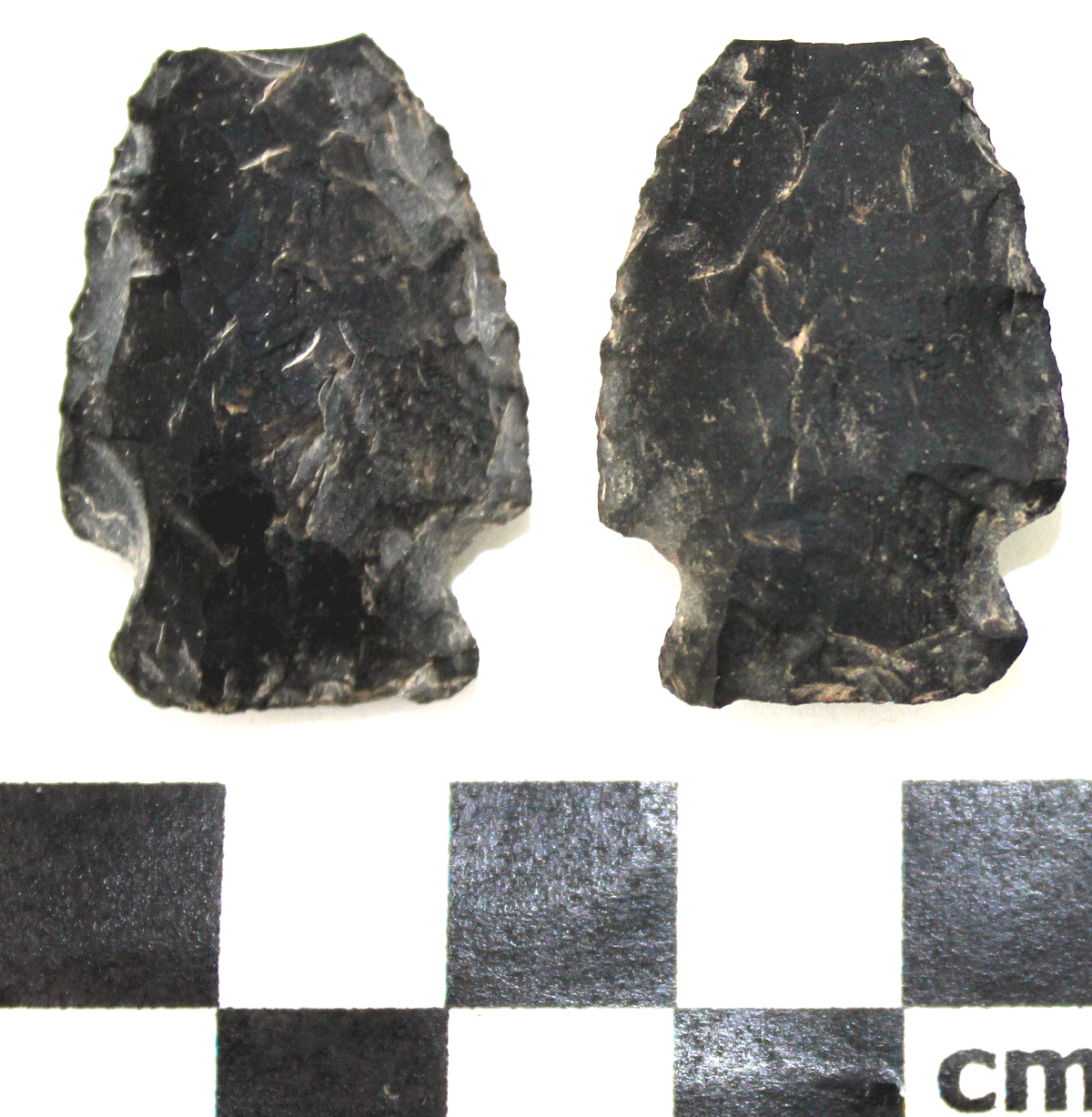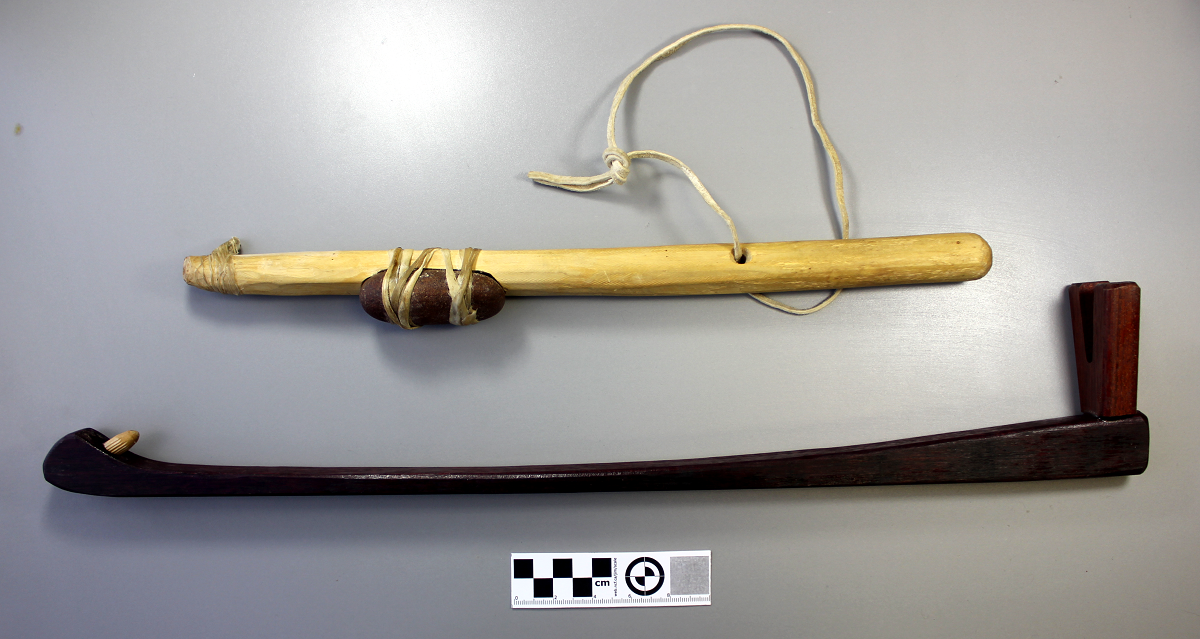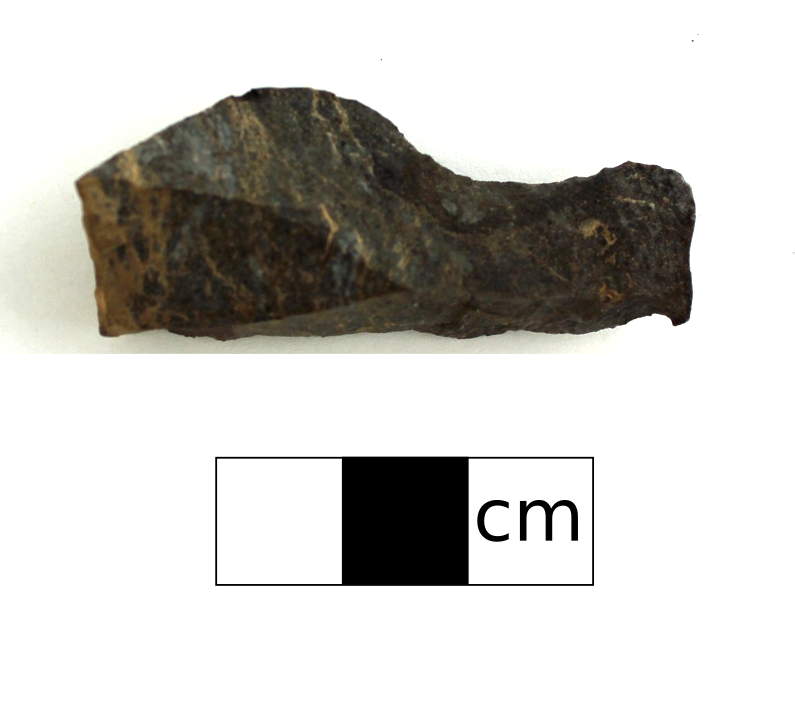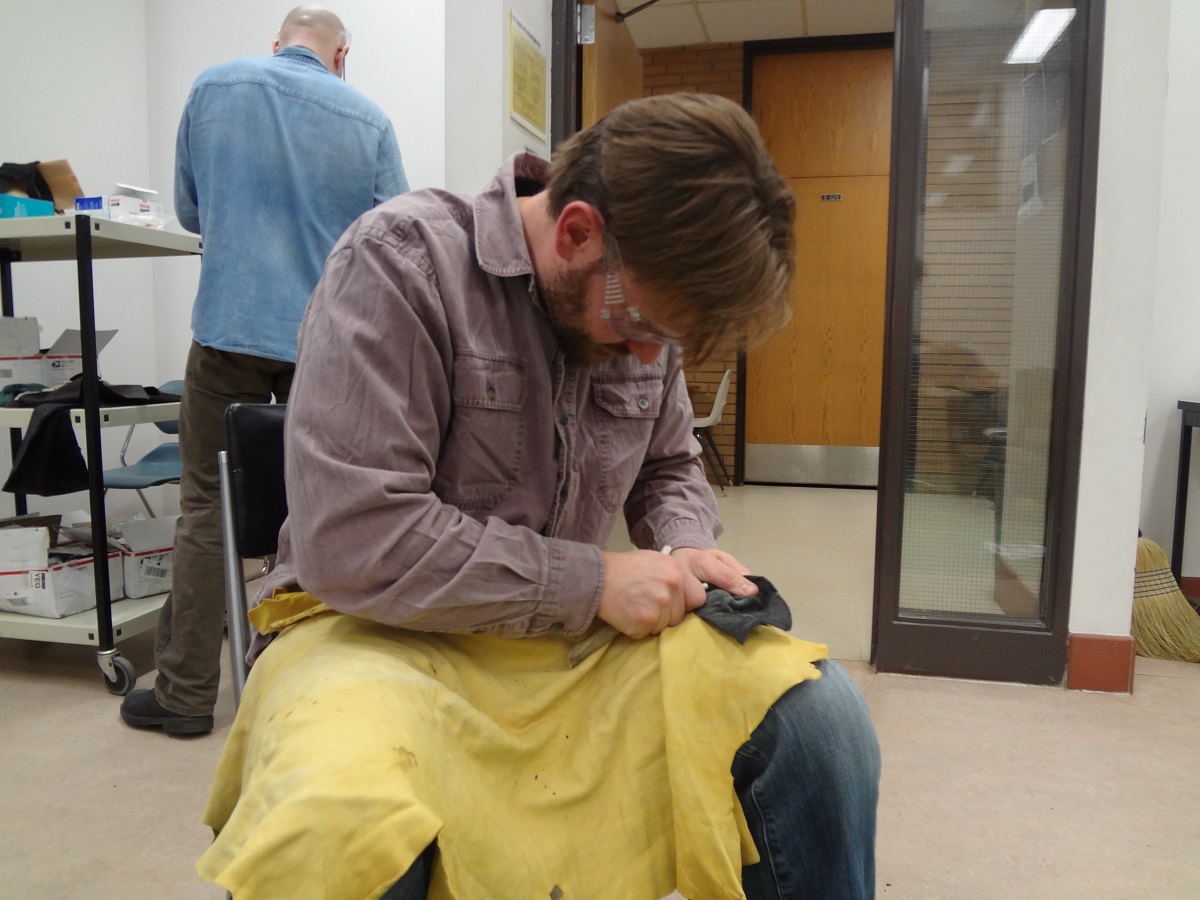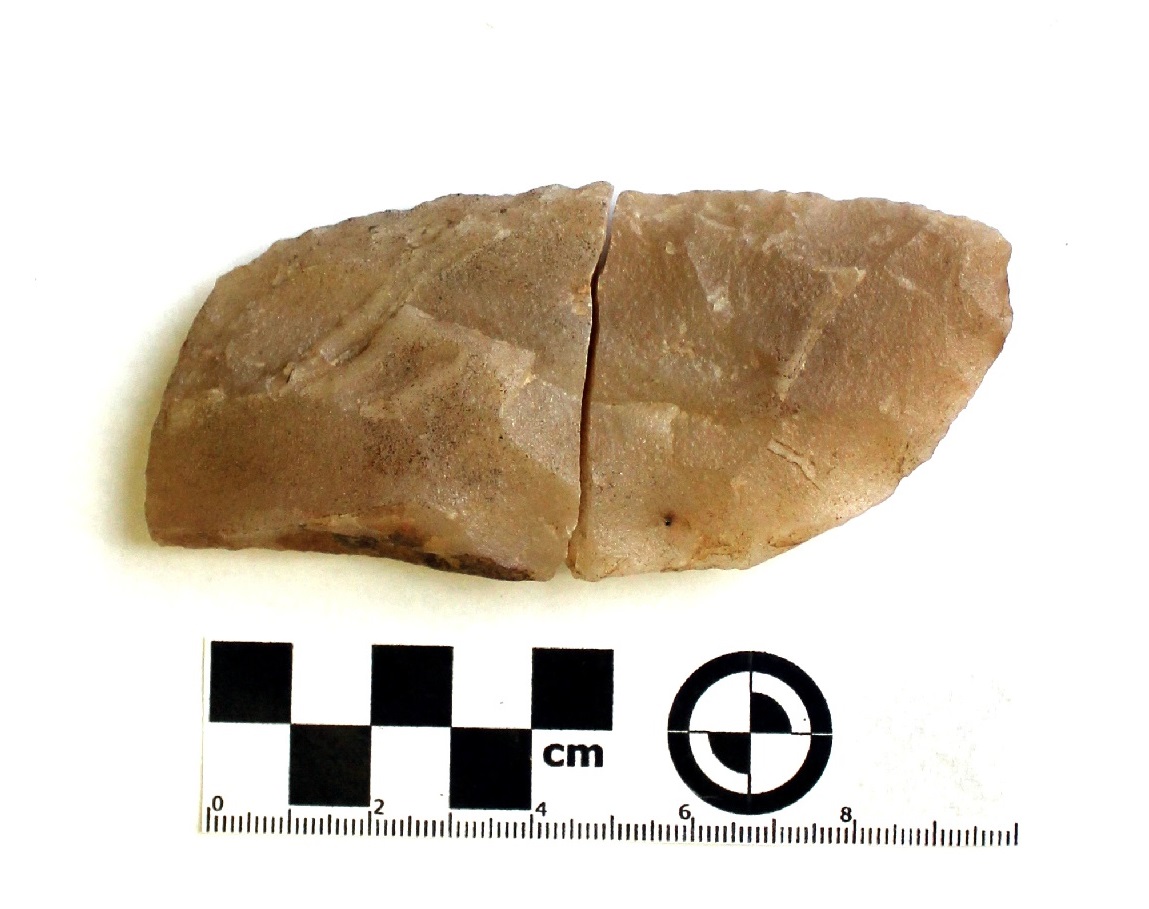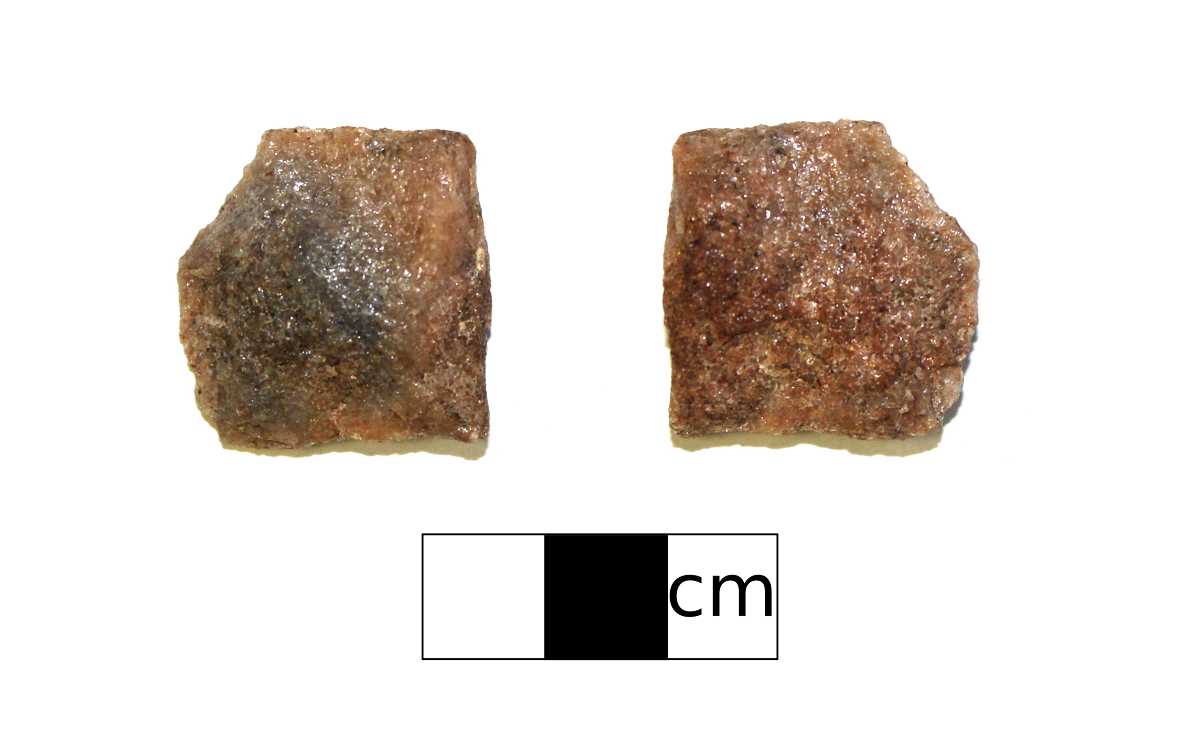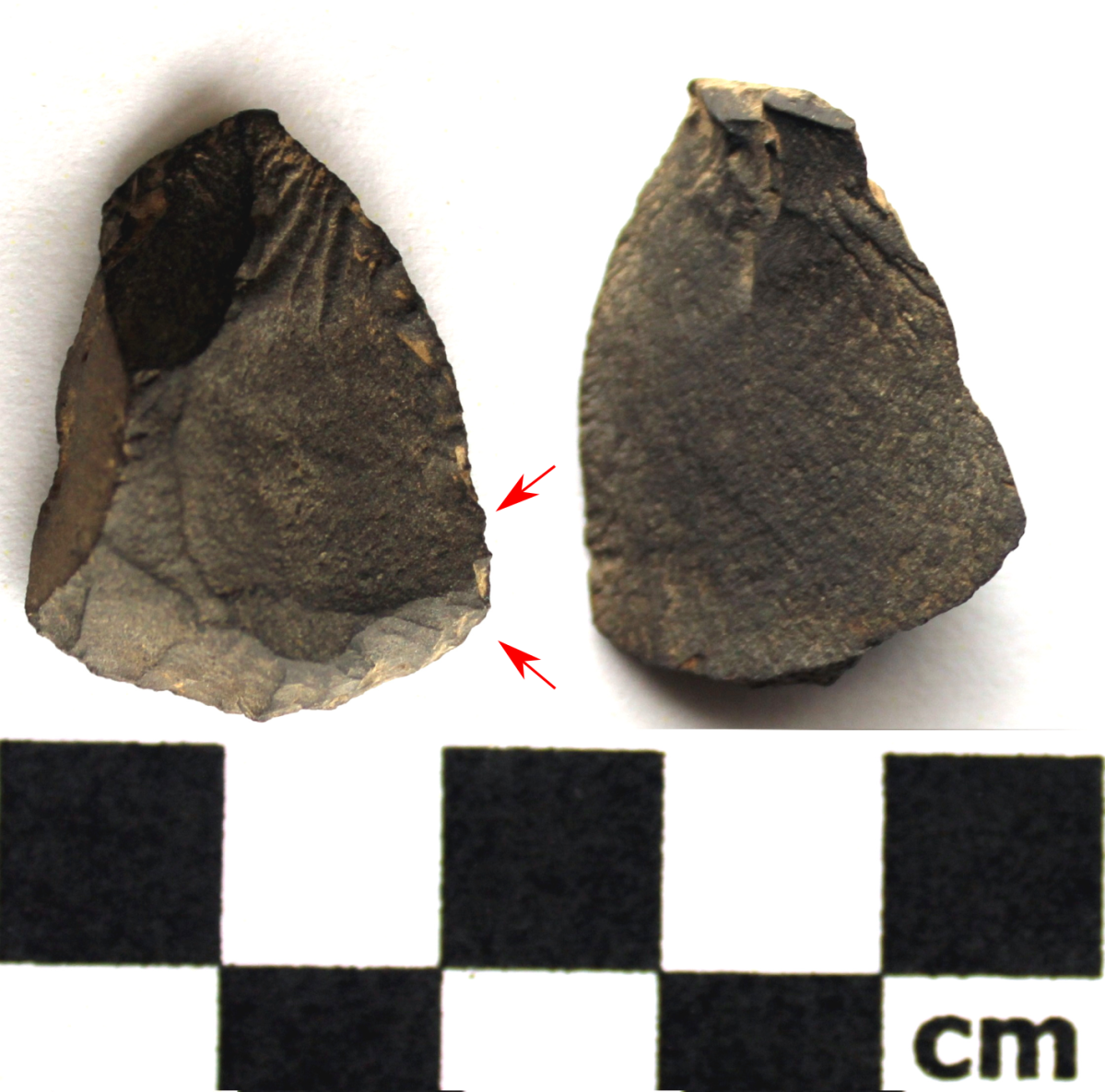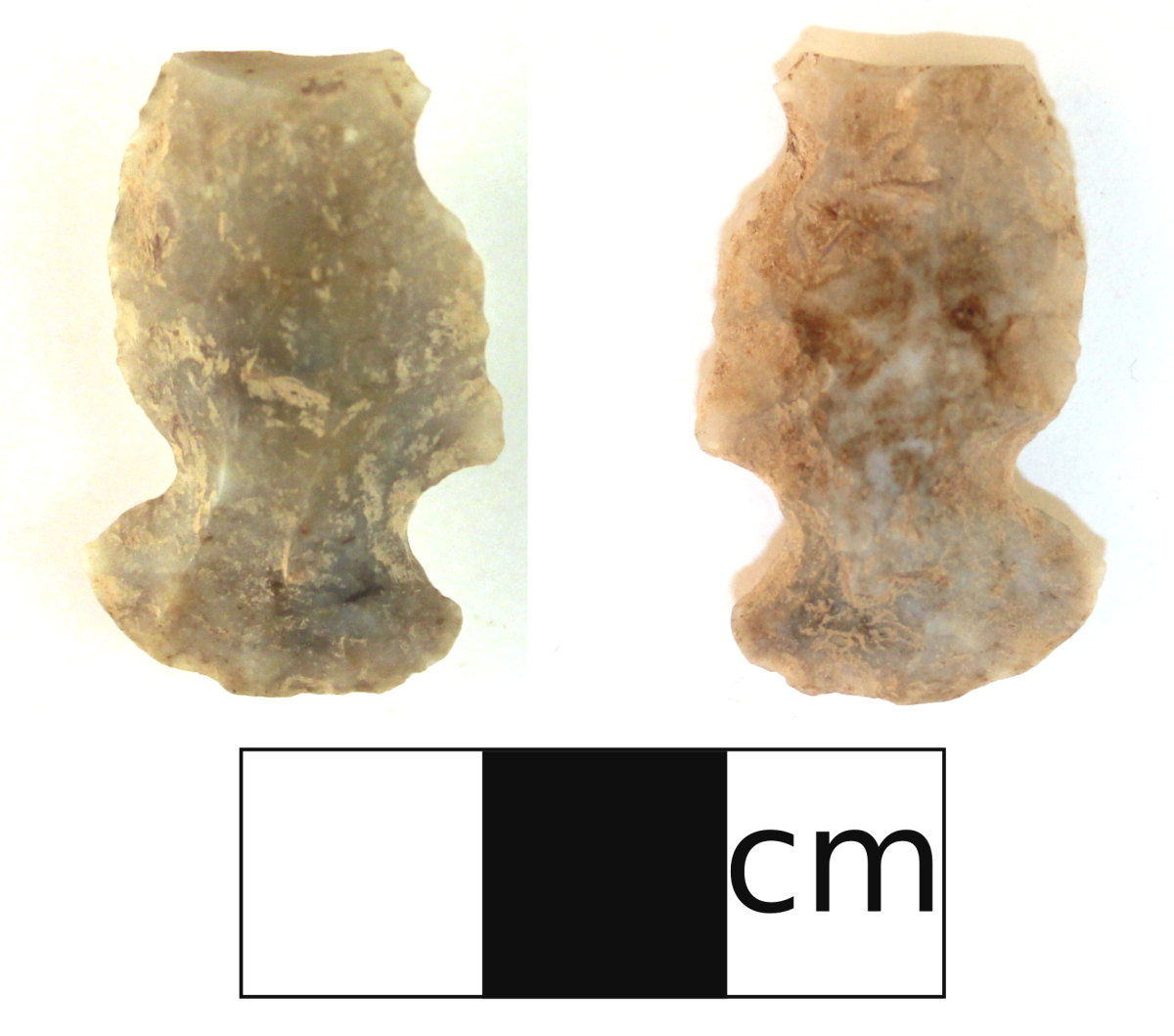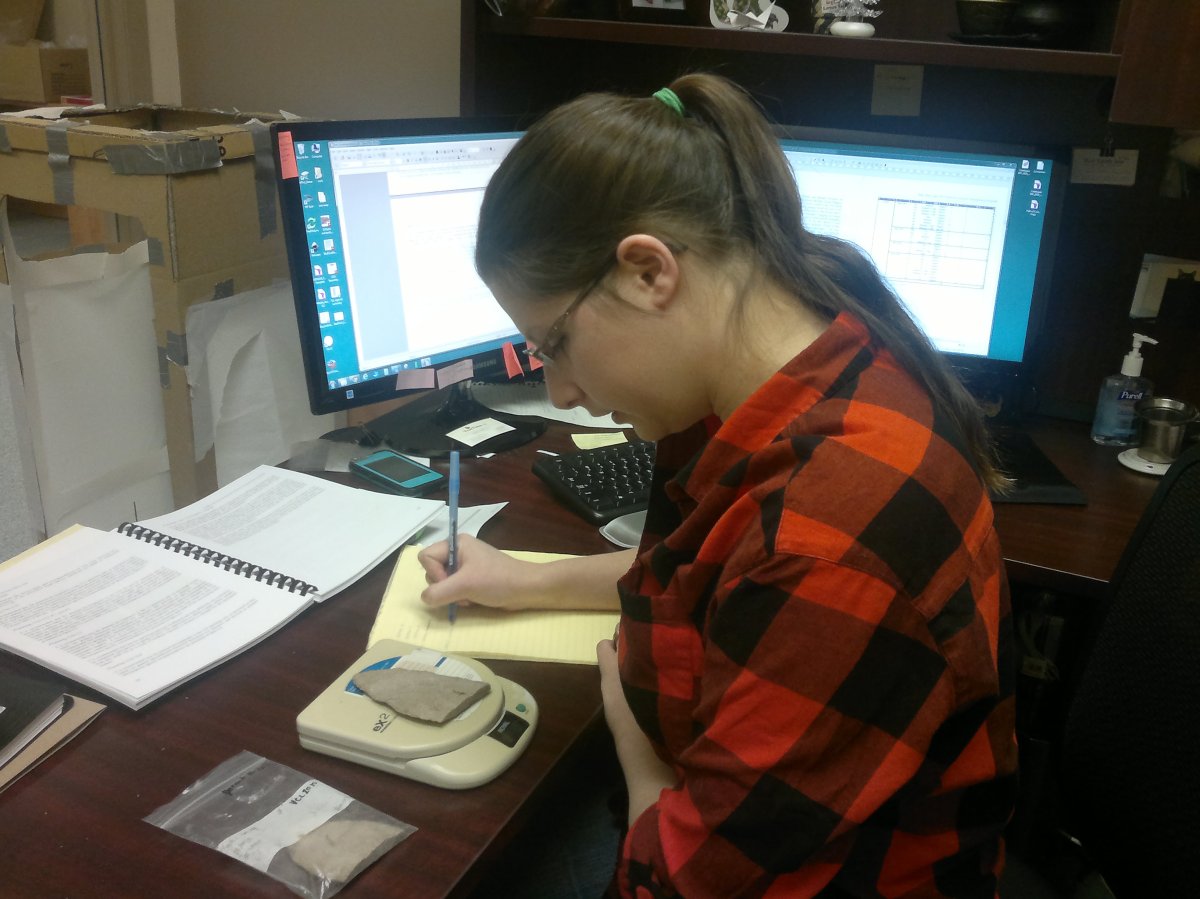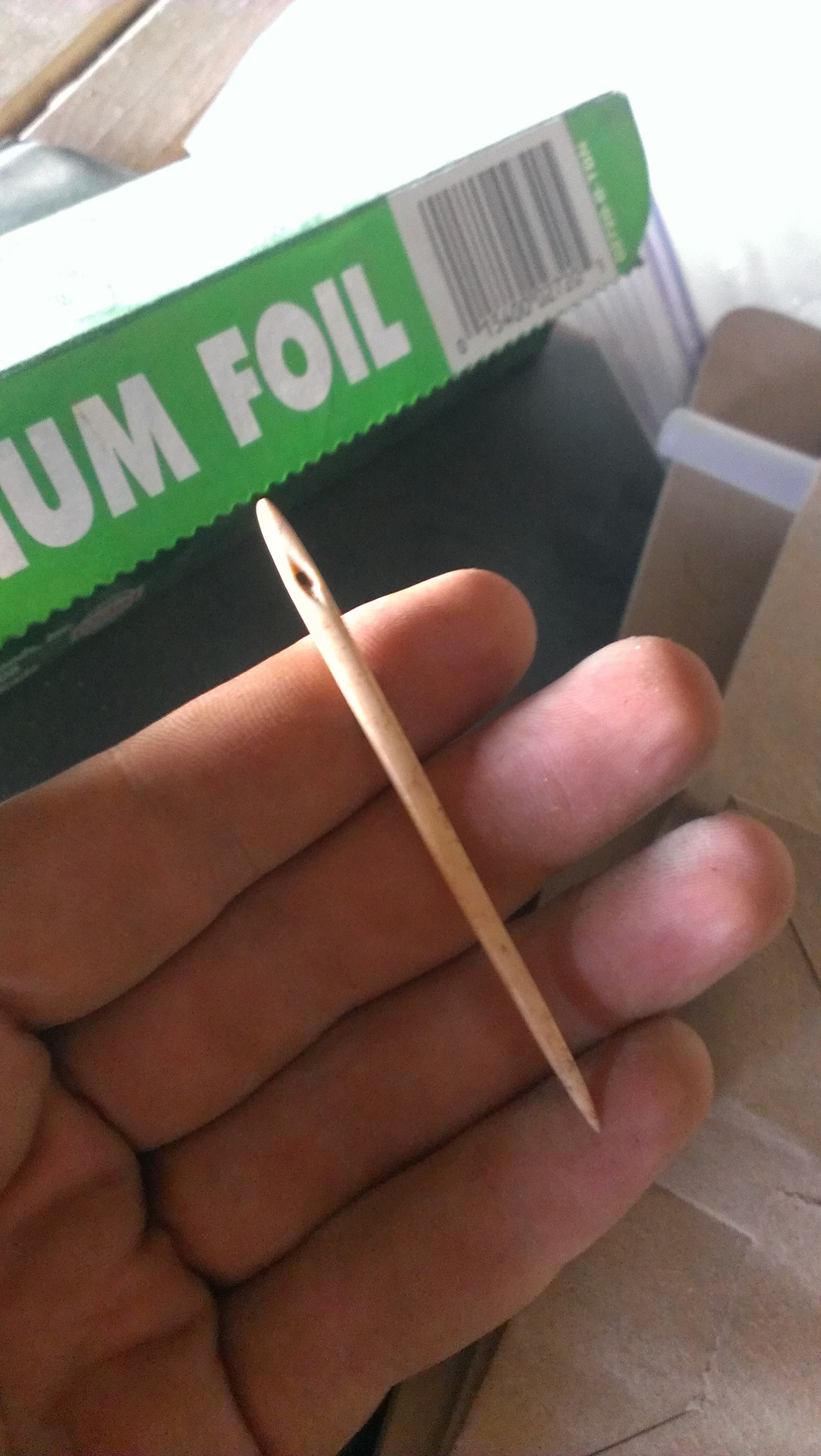Projectile points come in many shapes and sizes ranging from large paleolithic spear points to small protohistoric arrow heads to even smaller “toy arrow heads”. This artifact type is a stone that has been shaped using flint knapping techniques to create a sharp triangular and aerodynamic tip that is attached to a wooden shaft that can be propelled through the air by throwing by hand, atlatl, or bow, to hunt game. This is an important artifact type as over time the styles of points changed allowing us to use the style to estimate the time period a site was occupied. This particular point is a Besant style dart point, which dates to approximately 2,500 -1,350 BP.
Tag: artifact
Atlatl
An atlatl is a throwing stick with a small hook used to throw darts (projectiles). It allowed the hunter or warrior to create more leverage to increase the speed and distance of the dart. This weapon was used throughout North America including Alberta, approximately between 7,500 and 1,350 B.P.
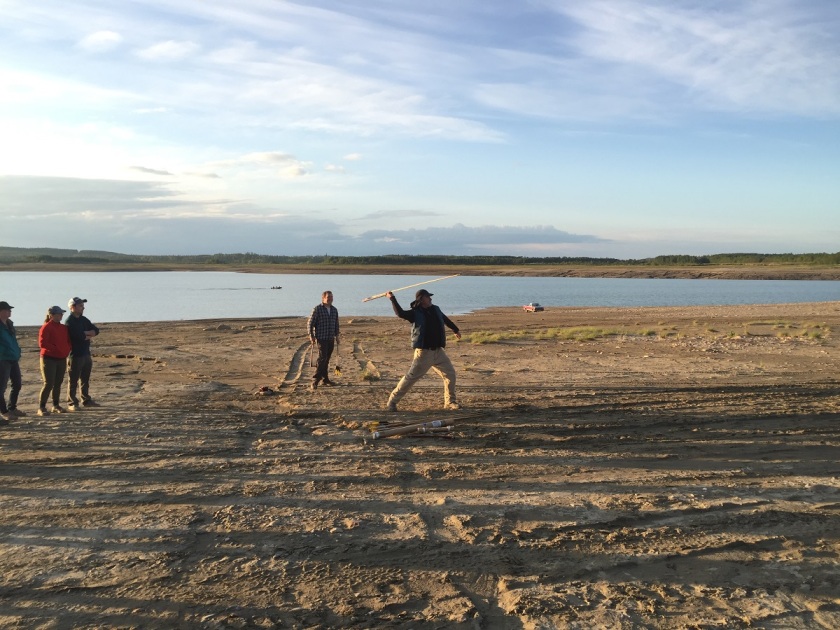
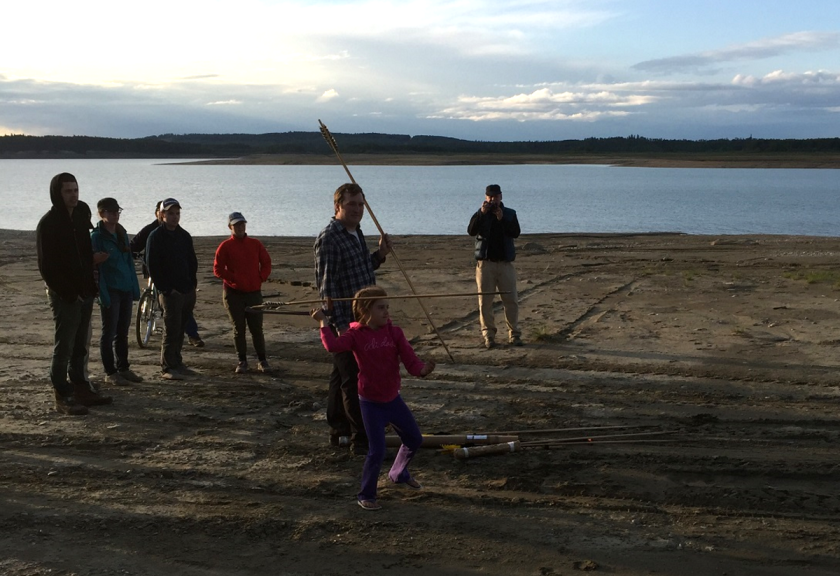
Spokeshave
A spokeshave is a type of formed tool that was used to scrape and/or smooth wooden shafts or handles such as on spears, darts and arrows. It is typically identified by the inward curving edge. This edge typically has small flakes removed from use or from shaping it into the curve prior to use.
Knapping / Flintknapping
The process of creating stone tools through lithic reduction (by removing stone chips). A hammer (such as a stone or antler) is used to strike the core rock in order to remove smaller pieces. The core is either shaped into a specific tool, like a biface, or the flakes that have been taken off are used or shaped into something specific, like a projectile point.
Biface
A biface is a stone tool that has flakes removed from both sides. It can be used as a knife, scraper, or further worked into a more recognizable tool. The typical biface shape is an oval with slightly pointed ends. The biface on the left was found near Fort Vermilion in 2016.
Wedge
This little guy is a wedge, or sometime as it is sometimes known as its french name, pieces esquilles. These tools are thought to have been used to split organic materials like wood and bone, much like an ancient stone chisel. One of the sharp sides of the wedge would be placed against the material that you wanted to split, and you would hammer the other end with a stone to drive the wedge through it. Since this little tool would literally be caught between a rock and a hard place, using a wedge would often create bipolar flake scars. You will also often see crushing and lots of hinge fractures on the tops and bottoms of these tools, where the edges are being crushed against the hammerstone and the material being split. As a result, wedges often have a short and squat rectangular body shape.
This particular specimen is made from a very coarse grained quartzite. Based on the reddish hue of the stone, it may have even been heat treated to improve the quality of the material. It was found near Wabasca-Desmarais, on a high ridge that overlooked a broad stream valley.
Expedient Tool
An expedient tool is an object that can be made quickly and easily with little or no production effort. This is a retouched flake we collected during the summer of 2016. The red arrow is pointing to where the flake has been retouched.
Side-Notched Projectile Point
We often post images of beautifully crafted tools such as the besant point from FcPu-11 or the siltstone knife from Buffalo Beach but not every tool we find is a “work of art.” This week’s photograph is of an “ugly” artifact we found in 2016 when undertaking an HRIA for Sundre Forest Products. The site was found on a terrace overlooking the confluence of two tributaries to the North Saskatchewan River. The artifact is a side-notched chert projectile point similar to the Prairie or Plains side-notched typology. The point is asymmetrical with one edge being a rounded convex shape and the other an undulating edge with an angular shoulder. The tip of the point is broken off which is common of the projectile points we find and is likely the reason the point was discarded. While aesthetics can add to the function of a projectile point this artifact demonstrates it was not necessary. The idea that it doesn’t matter how it looks as long as it works was alive in the past as much as it is today.
Introduction to CRM Part 5: Reporting
Once we have surveyed our targets and evaluated any sites we have found, it is time to return to the office. All of our notes are taken on an ipad in the field. Now all we have to do is export our notes into a database which eliminates the hours spent on data entry.
Note taking is extremely important for archaeologists (Figure 1). The notes supply researchers the context of the artifacts. In this case context means the precise location of the artifact and it’s association with other artifacts and landscape features. This helps researchers determine such things as the relationships between artifacts on a site, it’s position in time and space, and even how it is related to different archaeological sites (Figure 2). Without notes and proper excavation methods, the context in which the artifacts were found is lost forever, and the artifacts have little scientific or interpretive value.
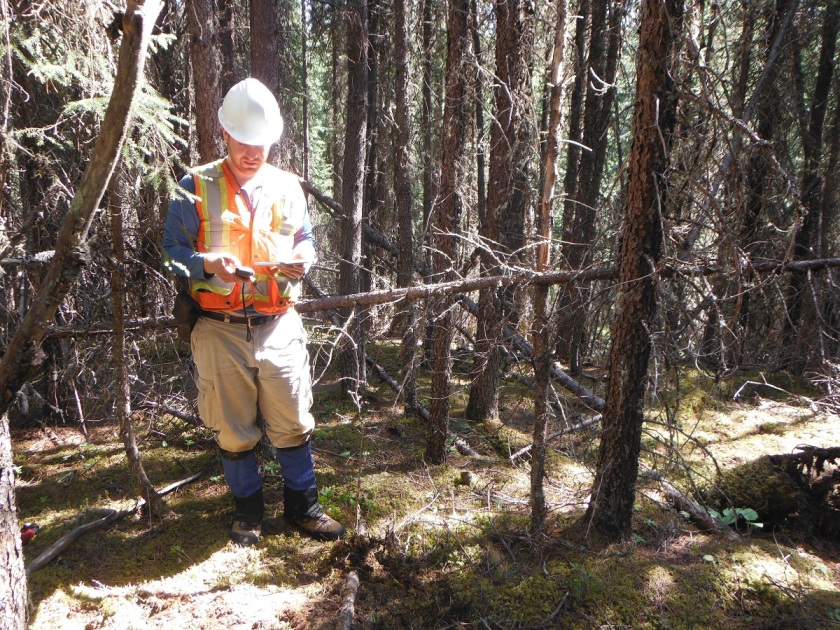
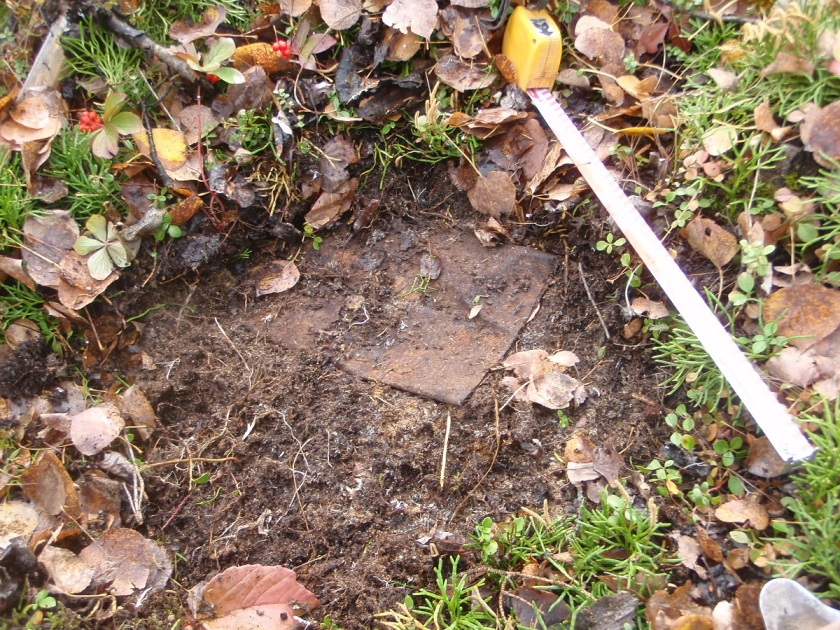
We also catalogue all of the artifacts that were collected in the field. We take measurements, weights, and note details such as material and artifact types, and enter them into a database (Figure 3). This along with the site notes gives us the information we need to write our reports.
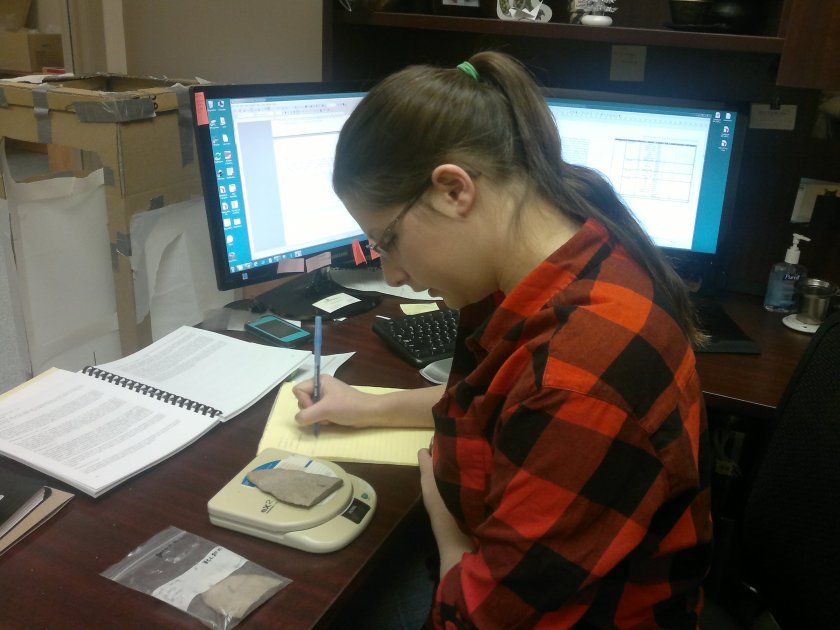
In the final stage of the Historic Resources Impact assessment, we compile a report of all the work that we have done and submit it to our clients and the government. The report identifies which developments need to be modified to avoid impacting significant archaeological and historic resources. The site information is included in a government database of all the sites in Alberta as a reference for future industry development as well as researchers. This minimizes the impact that our clients have on Alberta’s history while preserving the past for future research and education.
Bone Needle
This week we showcase a very unique artifact, a bone needle. This tool is very long and thick compared to the modern steel needles that we are more familiar with, but it still very sharp at the tip. The eye of the needle is diamond-shaped and tapered, which shows us that the eye was made by gouging the bone with a stone flake, rather than using a bow drill. A bow drill would have left a round hole rather than a diamond-shaped one. This type of artifact is extremely rare in North America, especially one that is complete. Most of the time when they are found, bone needles like these are broken around the eye, or you just find the tip of the needle.
This artifact was found in a dry cave in Utah, which is filled with artifacts left behind from thousands of years of indigenous people living in the cave. These repeated occupations left behind countless layers of juniper bark, which was laid down as a floor matting. The bone needle was found three meters below the modern surface. Talk about finding a needle in a haystack!

